This is the most instagramable car interior today
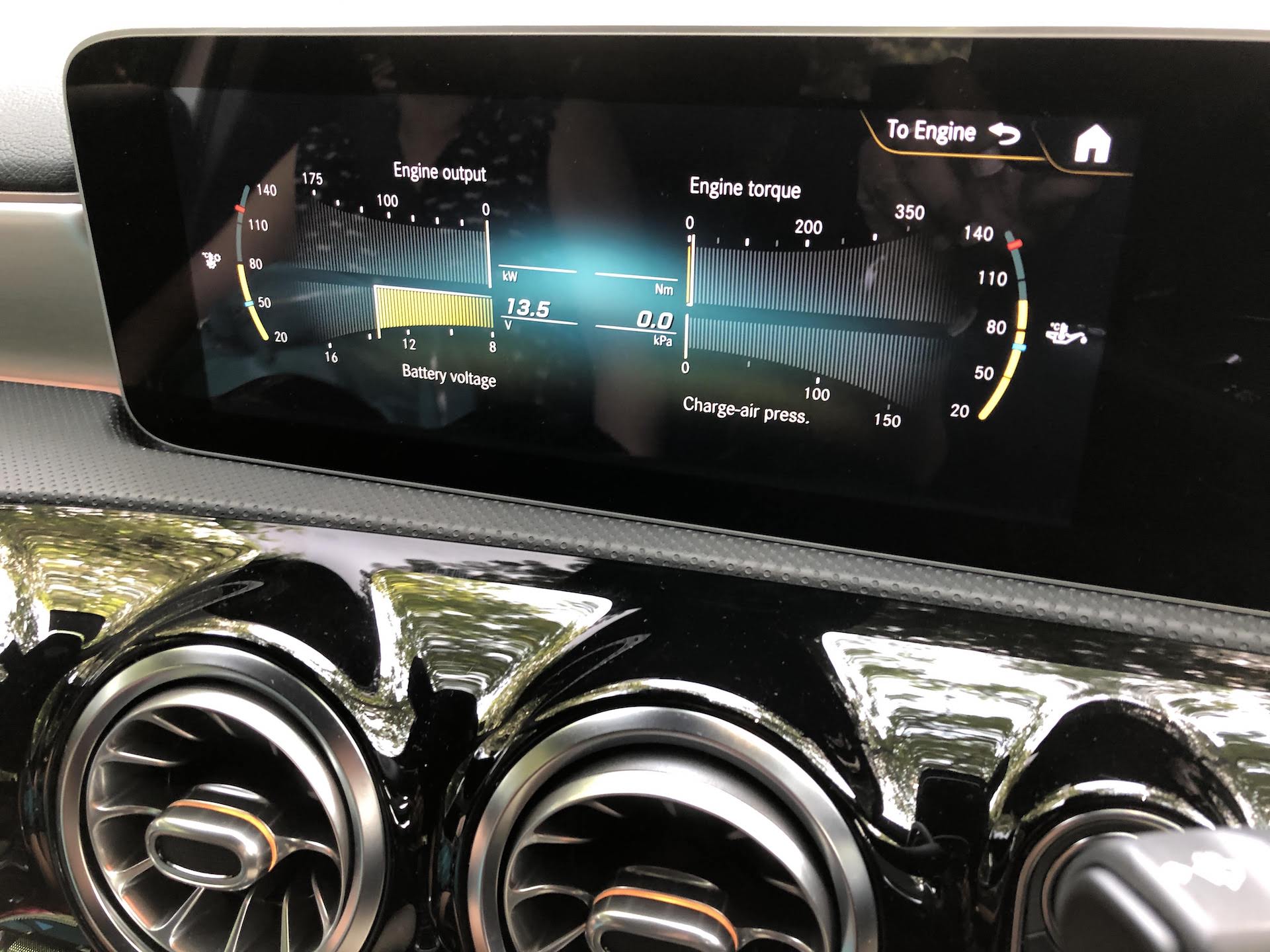
Yes, you guessed it right, this is the all new Mercedes A-Class. Technologically the new A-Class not only takes first place thanks to MBUX – Mercedes-Benz User Experience: it also offers a number of functions that were previously the preserve of the luxury class. But here we are looking at the cabin of this new A-Class which is feature filled like no other car manufacturer and it is an object of pure desire for car photographers.
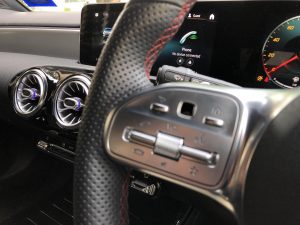
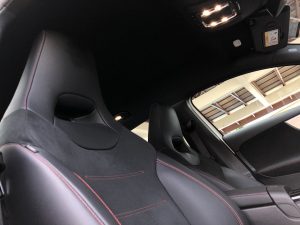
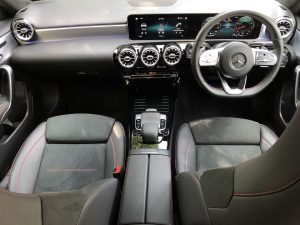

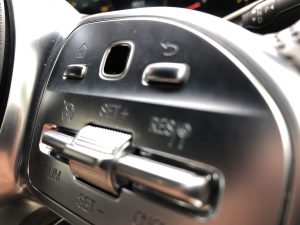

A revolution from within
The interior of the new A-Class is completely redefined with its modern, avant-garde look. Mercedes-Benz has taken a completely new approach, revolutionising the compact class from the inside with a new feeling of spaciousness.
The unique interior architecture is shaped in particular by the avant-garde design of the dashboard: For the first time a cowl above the cockpit has been completely dispensed with. As a result, the wing-shaped main body of the dashboard extends from one front door to the other with no visual discontinuity. The Widescreen display is completely free-standing. The air vents in a sporty turbine-look are another highlight.
The interior architecture and the control & display systems of the new A-Class are an avant-garde USP in this segment. The dashboard is divided into two three-dimensional, horizontal sections: the lower section is visually separated from the main body of the dashboard by a “trench”, and it appears to float in front of the dashboard. The optional ambient lighting enhances this effect, accentuating the free-floating impression of the substructure.
The lower section of the dashboard provides the basis for the turbine-look air vents and the completely free-standing display.
Integration of the air conditioning display into the central screen also considerably helps to maintain the clear line of the cockpit. The air conditioning is controlled by the horizontal rocker switches of via the corresponding touchscreen menu.
Thanks to the omission of a cockpit cowl, the main body of the dashboard with its trim extends from one door to the other behind the seemingly free-floating Widescreen. The optional trim elements are in a “wrap-around” design, and the choice of materials (e.g. open-pore wood) underlines the progressive, modern positioning as the top interior in this class.
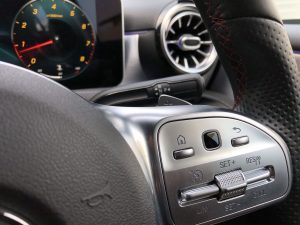
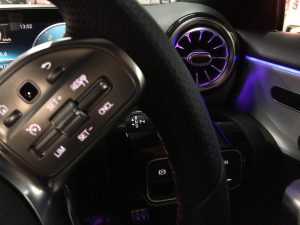
The five round air vents have a new turbine look inspired by the world of aviation. Finely designed air vanes in a concentric arrangement create the impression of a jet aircraft turbine. In the Style equipment line the vent surround is colour-accentuated at the depth of the vent geometry, giving the impression of an afterburner. The air vents in the middle are driver-oriented, accentuating the sportiness of the interior.

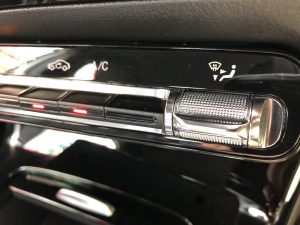
The door centre panel transitions seamlessly into the armrest, underlining the sensual, flowing design principle. The newly designed 3-spoke steering wheel, door handles, centre console and seats follow a modern design idiom. The ring-shaped, completely closed grab/door-pull handle is of unusual design and particularly ergonomic.
Fresh colours and unusual trim
The interior can be adapted to suit personal tastes in many ways. The fresh colour concept plays an important part in this: the choice includes indigo blue inspired by the denim jeans look, as well as cool neva grey exclusive to the Mercedes-Benz A-Class. Light effects create an additional effect in this context.
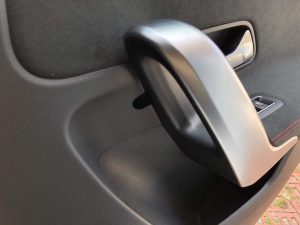
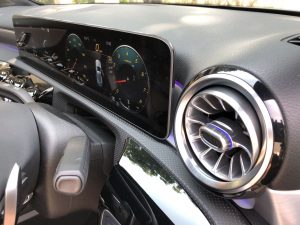

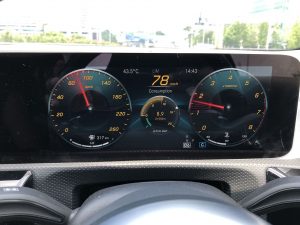
Depending on the equipment line, different types and colours of trim elements are available for the dashboard.
From 12 to 64 – with the generation change, five times as many colours are optionally available for the ambient lighting of the new A-Class. It is not just the variety that has increased, as the emotive presentation also sets standards in this segment: the different colours are composed into ten colour worlds to allow an avant-garde lighting display with spectacular colour changes.
The colour worlds can be matched to the different styles of the widescreen display if required, creating a harmonious overall impression. There are also lighting effects that customers can activate individually.
The avant-garde ambient lighting was already taken into consideration in an early development phase, and systematically integrated into the interior design. This is apparent in the area where the upper and lower sections of the dashboard come together, for example.
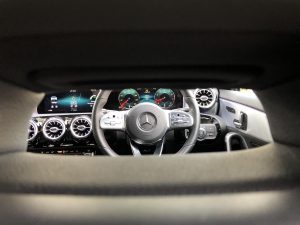

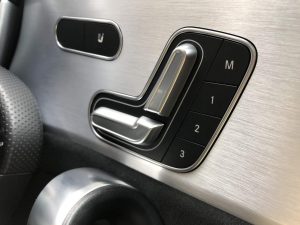
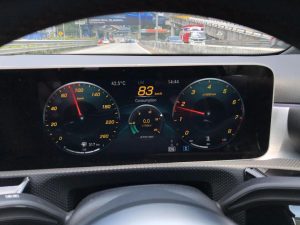
Thanks to a combination of indirect and direct lighting, a very special ambience is created here which might be compared to the night-time illumination of a historic building. The interior of the turbine-like air vents with galvanised surfaces is likewise emotively presented by the ambient lighting.




